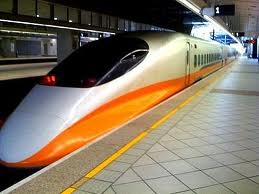

The Taiwan Bureau of High-Speed Rail wants to include 4G WiMAX on high-speed trains in that country. Few would argue over the benefis of rail transportation, and even less so if they remain connected to homes and businesses.
The growth of smartphones and mobile tablets is pushing the need for greater access to a wide variety of internet services that must be fast, available and wherever people go. Taiwan is already one of the world’s most advanced country’s with exceptional internet services, including a well known smartphone manufacturer.
Since many people commute from distances to their workplaces, the ability to cut a long work day down to size, is helped along through the new infrastructure. But it does not stop there.
As the boundary between home and work place blurs, it is also happening during a time when buildings and other infrastructure are coming alive with sensors and other devices that connect people to places.
Putting 4G into trains is a logical step for a society aiming ‘to go digital’ and to connect people to all places at all times.